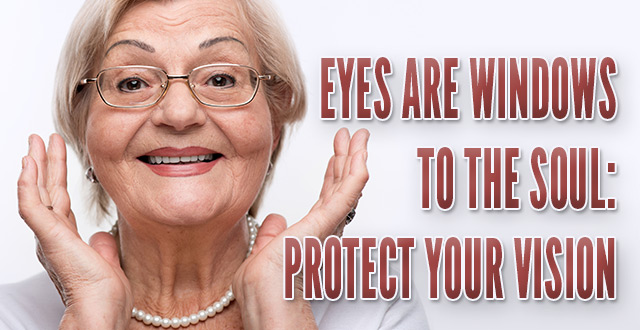“Save Your Vision” month, observed in March, is dedicating to raising awareness about protecting one’s vision and obtaining quality vision care. Experts predict that by 2030, rates of vision loss will double along with the country’s aging population.
The four leading eye diseases affecting older Americans are age-related macular degeneration, cataracts, diabetic retinopathy and glaucoma. And, while our vision changes as we age, our lifestyle choices can help improve our chances of maintaining good eye health.
Regular, comprehensive eye exams are the first step to ward off vision loss. Often, eye specialists are the first to detect diseases such as high blood pressure and diabetes.
Here are a few tips/lifestyle changes to help protect your vision health:
Eat Well:
Diets rich in antioxidants (blackberries, sweet potatoes and whole grains) and essential omega-3 fatty acids (salmon, walnuts and spinach) play a key role in the health of one’s macula, the part of the eye responsible for central vision.
Quit Smoking:
Studies show that people who smoke double their chance of developing cataracts, and the risk continues to increase with each cigarette. Stopping immediately reduces the risk for cataracts as well as age-related macular degeneration. If you’re not a smoker, it’s important to avoid secondhand smoke which can have negative consequences on vision as well.
Exercise:
Physical activity improves blood circulation throughout the body and improves oxygen levels in the eyes while removing toxins. Exercise also protects one’s eyesight by reducing inflammation in your body which can impact the eyes.
Get Enough Sleep:
Lack of sleep can cause the eyes to become dry which may lead to blurry vision and eye irritation, affecting one’s day-to-day routine. Research has found that eyes need a minimum of five hours of sleep per night to fully replenish. Eye spasms or the twitching of the eye lid is most often linked to insufficient sleep.
Limit Screen Time:
After just two hours of staring at your computer screen, your eye muscles can become fatigued. Be sure to take a break every 15 minutes. Opticians have also noted that prolonged exposure to the blue violet light in smartphones can be potentially hazardous to the back of the eyes.
Wear Sunglasses:
Long hours in the sun without eye protection can damage eyes by contributing to cataracts. Be sure to read the label before purchasing a new pair of sunglasses. You should be protected from 99-100 percent of UVA and UVB rays.
Know Your Risks:
If your family has a history of eye conditions, it’s important to discuss your risk factors with your eye care specialist. They’ll be able monitor your vision closely and quickly detect signs and symptoms.
At the first sign of vision problems, be sure to schedule an appointment with an eye care specialist. While blurry vision, for example, can be a side effect of a medication you are currently taking, it could be the early warning signs of a more serious condition. It’s far better to be safe than sorry. Protect your vision!

